Australia’s favourite birds
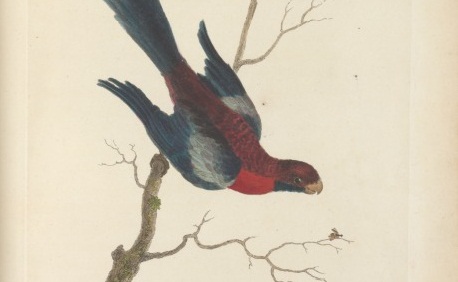
Have you seen a pennantian parrot lately? Do wattled bee-eaters live in your backyard? What about the crested goatsucker or the white vented crow?
This week is BirdLife Australia’s annual Bird Week, and, to celebrate, the conservation organisation is inviting Australians to vote for their favourite bird. This avian election prompted my colleague Martha Sear and I to wonder which species the first British settlers in Australia might have selected as their favourite local bird, so we looked at the National Museum’s copy of Surgeon-General John White’s Journal of a Voyage to new South Wales to see how he might have voted in the Bird Week survey.
It turns out that White was fascinated by a number of different birds that he found in the Sydney area, buts it’s tricky to figure out exactly which species caught his interest. His journal features birds with quite unusual names, like the pennantian parrot and the crested goatsucker, that I’ve certainly never heard of before.
White was appointed Chief Surgeon for the first British colony in the New South Wales in 1786 and he arrived at Sydney Cove with the First Fleet in January 1788. At first, his time was occupied with battling outbreaks of scurvy and dysentery and trying to establish a hospital but, within a year, White, a keen amateur naturalist, was finding time to explore the area around Port Jackson.
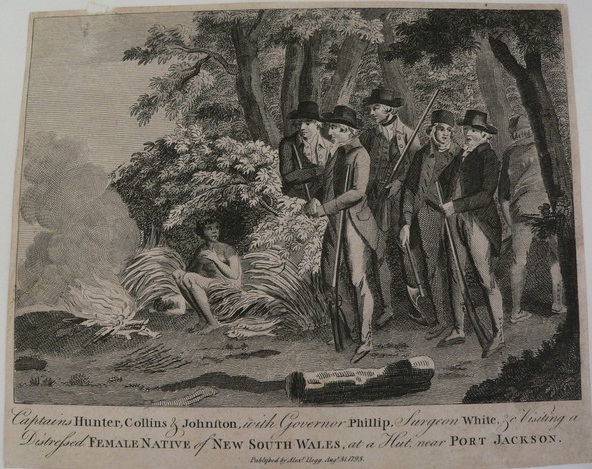
White was particularly interested in birds, making drawings and collecting specimens of local species and describing them in the journal he kept detailing his time in the colony. In November 1788, he dispatched his account to a London friend, Thomas Wilson, and in 1790 it was published as Journal of a Voyage to New South Wales. The book included sixty-five hand-coloured engravings illustrating the colony’s fauna and flora. Twenty eight of these plates featured birds, with these engravings made in England based on drawings or specimens sent by White and annotated by English natural history specialists.
Today, it’s quite tricky to decipher which species are represented in White’s journal. The beautiful engravings don’t always resemble birds as we now recognise them, suggesting that the early British colonists were just learning how to see Australian native species. The process of producing the engravings from specimens probably also further distorted the birds’ forms and colours. And the names assigned to various species in the Journal are now quite unfamiliar, making it difficult to decide which birds captivated the Surgeon-General’s attention.
Perhaps you can help us decide which birds White chose to illustrate. Below are ten plates, each with White’s description of his encounter with the relevant bird, from the Journal of a Voyage to New South Wales. I think these illustrations might map to some of the candidates in Bird Week’s ‘Australia’s Favourite Bird’ competition, but what species do you think they represent? And which species do you think White would have chosen as his favourite Australian bird?
If you’re interested in Surgeon-General John White and his time in Australia, you might like to check out our collection highlight on the First Fleet table. Or, if you’re visiting the Museum, take a look at White’s journal and the table which are currently on display in our Journeys gallery.
The plates, with excerpts from White’s Journal:
- GREAT BROWN KING’S FISHER
We not long after discovered the great brown King’s Fisher, of which a plate is annexed. This bird has been described by Mr. Latham in his General Synopsis of Birds, vol. ii., p. 603, nearly to the following purport:–The length eighteen inches; the bill black above and white beneath; the feathers of the head narrow and pretty long, so as to form a kind of crest. They are of a brown colour, streaked with paler brown; the back and wings in general brown; the lower part of the back and rump pale blue-green; the outer edges of the quills blue; within and the tips black; on the wing coverts is a patel of glossy blue-green; the tail is barred with ferruginous and steel-black, glossed with purple, the end, for one inch, white; the under part of the body is white, transversely streaked with dusky lines; legs yellow, claws black.
This bird is not uncommon in many islands of the South Seas, being pretty frequent at New Guinea, from whence the specimen came from which Mr. Latham took his description: it is also an inhabitant of New Holland, from whence several have been sent over to England.
2. BLUE BELLIED PARROT
We likewise saw several Blue-bellied Parrots. This is a very beautiful bird, and Mr. Latham, whose leave we have to copy the account of it, from his Syn. vol. i., p. 213, No. 14. B., describes it thus: “The length is fifteen inches; the bill is reddish; orbits black; head and throat dark blue, with a mixture of lighter blue feathers; back part of the head green; towards the throat yellow green; back and wings green; prime quills dusky, barred with yellow; breast red, mixed with yellow; belly of a fine blue; thighs green and yellow; tail cuneiform; the two middle feathers green; the others the same, but bright yellow on the outer edges; legs dusky.”
This bird is a very common species in various parts of New Holland, and in great plenty both at Botany Bay and Port Jackson. It is found to differ much in plumage, several other varieties having been met with, which are natives of Amboina and others of the Molucca Islands.
3. WATTLED BEE-EATER
The Wattled Bee-eater, of which a plate is annexed, fell in our way during the course of the day. This bird is the size of a missel thrush but much larger in proportion, its total length being about fourteen inches. The feathers on the upper part of the head, longer than the rest, give the appearance of a crest; those of the underpart are smooth; the plumage for the most part is brown, the feathers long and pointed, and each feather has a streak of white down the middle; under the eye, on each side, is a kind of wattle, of an orange colour; the middle of the belly is yellow; the tail is wedge-shaped, similar to that of the magpie, and the feathers tipped with white; the bill and legs are brown. This bird seems to be peculiar to New Holland, and is undoubtedly a species which has not hitherto been described.
4. PORT JACKSON THRUSH
The Port Jackson thrush, of which a plate is annexed, inhabits the neighbourhood of Port Jackson. The top of the head in this species is blueish-grey; from thence down the hind part of the neck and the back the colour is a fine chocolate brown; the wings and tail are lead colour, the edges of the feathers pale; the tail itself pretty long, and even at the end; all the under parts from chin to vent are dusky-white, except the middle of the neck, just above the breast, which inclines to chocolate. The bill is of a dull yellow; legs brown.
5. PENNANTIAN PARROT
The Pennantian Parrot (of which see plate annexed) was about this time first noticed. The general colour of the body, in the male, is crimson; the feathers of the back black in their middle; the chin and throat blue; the wings blue, with a bar of a paler colour down the middle of them; the tail is long, and blue also, and all but the two middle feathers have the ends very pale.
The female differs in having the upper parts of the neck and body of a greenish colour; the top of the head red, and a patch of the same under each eye; the chin and throat blue; lower part of the neck and breast red, as are the rump and vent; the middle of the belly dusky green; tail dark blue, fringed with chestnut; shoulders blue; the rest of the wing the same, but darker; bill and legs as in the male.
6. NEW HOLLAND CREEPER
We discovered the New Holland Creeper (see plate annexed). The general colour of the bird is black, spotted in various parts with white: the bill is dusky, growing paler towards the tip; the neck, breast, belly, and sides are more or less streaked with white; over the eye is also a white streak, and the sides of the neck and beginning of the back have likewise some streaks of the same. The quills and tail feathers are marked with yellow on the outer margins; the last are rounded in shape, and two or three of the outer feathers spotted within, at the tip, with white; legs dusky; is about the size of a nightingale, and measures seven inches in length. It is probably a non-descript species.
7. CRESTED COCKATOO
I cannot regard this bird in any other view than as a variety of the Psittacus cristatus of Linnaeus, or large white cockatoo, which has been described by almost all ornithologists, and figured in several works of Natural History. The bird seems liable to great variation both as to size and colour; the white in some being of a much purer appearance than in others, and the yellow on the crest and tail more predominant. All the varieties yet known agree in having the beak and legs blackish. The individual specimen here figured seems of a somewhat slenderer form than usual. The colour not a pure white, but slightly tinged on the upper parts, and particularly on the neck and shoulders, with dusky. The feathers on the front white, but the long lanceolate feathers below them, which form the crest, of a pale jonquil-yellow. The tail white above, and pale yellow beneath, as are also the wings.
8. CRESTED GOAT-SUCKER
Caprimulgus cristatus
C. cinereo-fuscus, subtus pallidus, remigibus caudaque fasciis pallidis numerosis, vibrissis utrinque erecto-cristatis. Corpus supra punctis minutissimis subalbidis irroratum.
Cinereous-brown Goat-sucker, pale beneath; with the long feathers of the wings and tail sprinkled with numerous pale fasciae, and the vibrissae (or bristles on the upper mandible) standing up on each side, in the manner of a crest. The body on the upper part is sprinkled with very small whitish specks.
The birds of this genus are remarkable for the excessive wideness of the mouth, though the beak is very small; in their manner of life, as well as general structure, they are very nearly allied to the genus Hirundo, or swallow, and indeed may be regarded as a kind of nocturnal swallow. They feed on insects, particularly on beetles. The name Caprimulgus, or Goatsucker, was given to this genus from an idea that prevailed amongst the more ancient naturalists of their sometimes sucking the teats of goats and sheep; a circumstance in itself so wildly improbable that it would scarce deserve to be seriously mentioned were it not that so accurate a naturalist as the late celebrated Scopoli seems in some degree to have given credit to it.
9. WHITE-VENTED CROW
Corvus graculinus
Corvus niger, remigum rectricumque basi apiceque caudae albis.
Black Crow, with the bases of the wing and tail feathers, and the tip of the tail, white.
This bird is about the size of a Magpye, and in shape is not much unlike one, except that the tail is not cuneated, but has all the feathers of equal length. The bird is entirely black, except the vent, the base of the tail feathers, the base of the wing feathers, and the extremity of the tail, which are white. The small part of the white base of the wing feathers gives the appearance of a white spot when the wings are closed. The beak is very strong; the upper mandible slightly emarginated near the tip, and the lower mandible is of a pale colour towards the tip. The capistrum reversum, or set of bristles, which are situated forward on the base of the upper mandible in most of the birds of this genus, is not very conspicuous in this species; but the whole habit and general appearance of the bird sufficiently justify its being regarded as a species of Corvus.
10. SUPERB WARBLERS
Motacilla Superba
Motacilla nigra, remigibus fuscis, abdomine albo, fronte genisque caeruleis.
Black Warbler, with the long feathers of the wings brown; the belly white; the forehead and cheeks blue.
This beautiful species is generally found in the state described in the specific character; but it appears to be subject to great variety, two of which are exhibited; the lower and largest specimen having not only more blue on the head than usual, but also a patch of brilliant blue on each side of the back and a mark of reddish-brown or orange near the shoulders.
The upper specimen is considerably less than that beneath, and has still more blue upon the head; the beak and legs smaller in proportion, darker in colour, and the latter almost black. The head is crowned with a small crest of bright azure; the cheeks and upper part of the back and wings are of the same colour; the lower parts of each brown. The outer feathers of the wing whitish, near the shoulder marked with brown. The head, neck, and breast deep black; abdomen white, faintly tinged with dusky. Tail black, highly cuneated. In this bird the blue is most lucid, composed of short, stiff feathers, resembling fish-scales, with shining surfaces; but it has not the beautiful scapulary of prismatic violet-colour found in the other. Legs, feet, and claws black, and extremely slender.
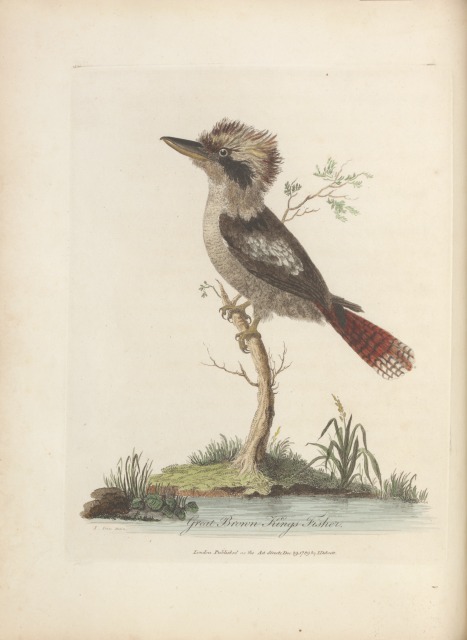
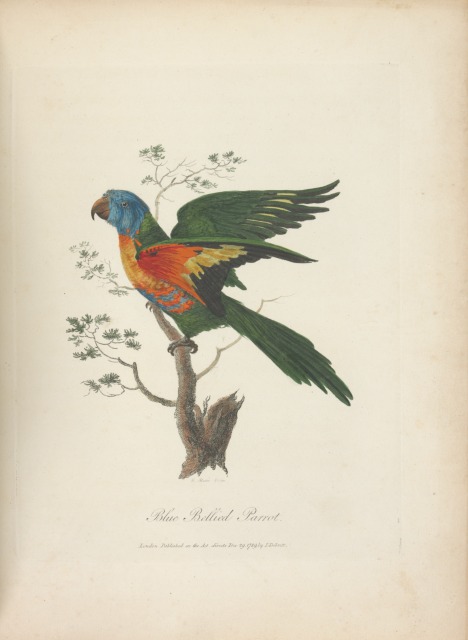
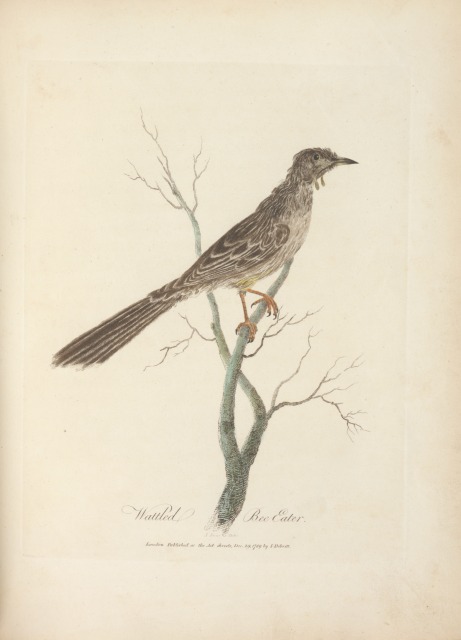
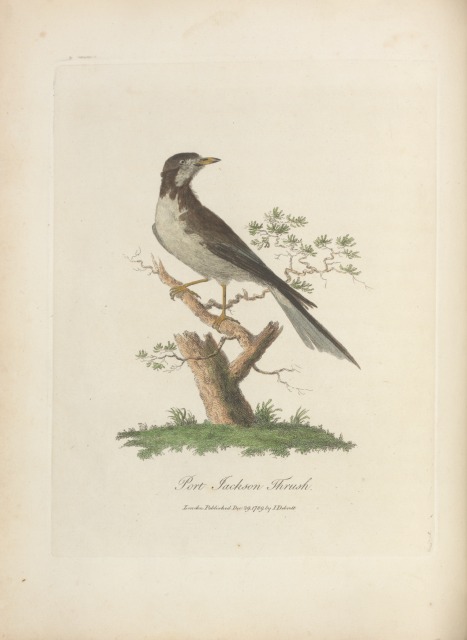
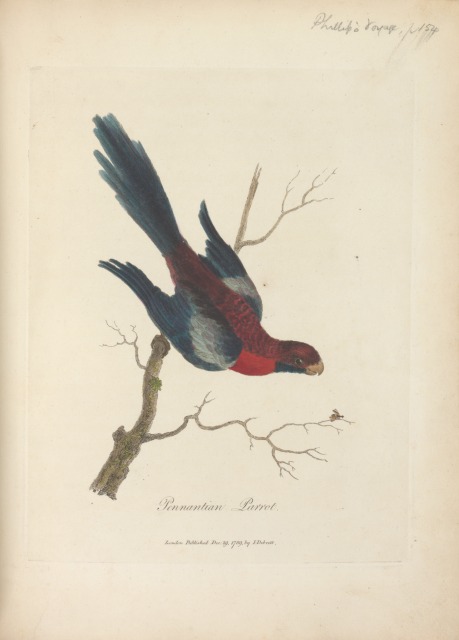
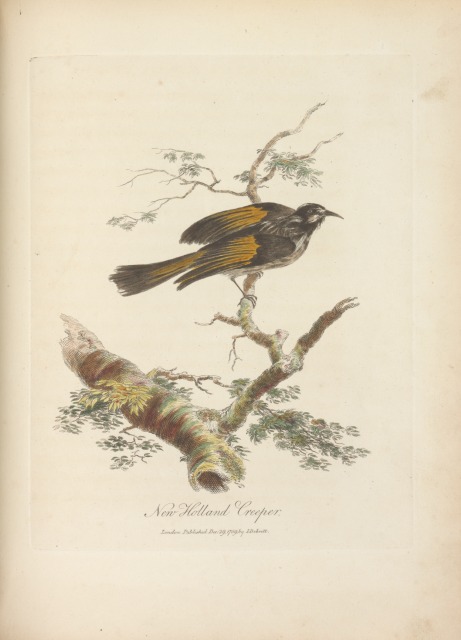
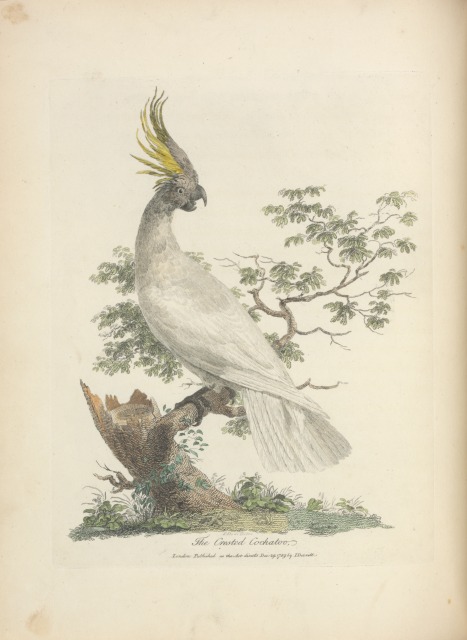
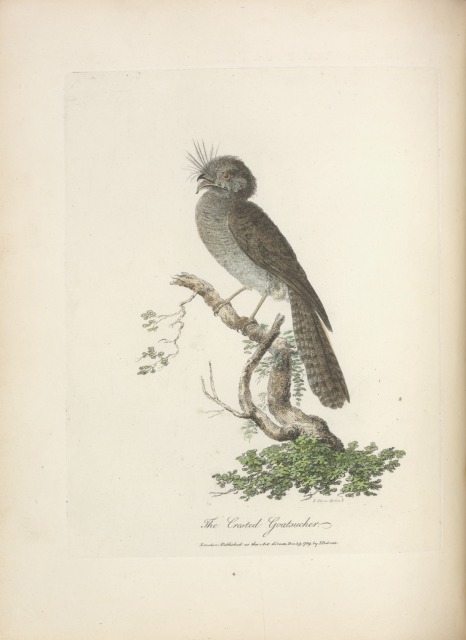
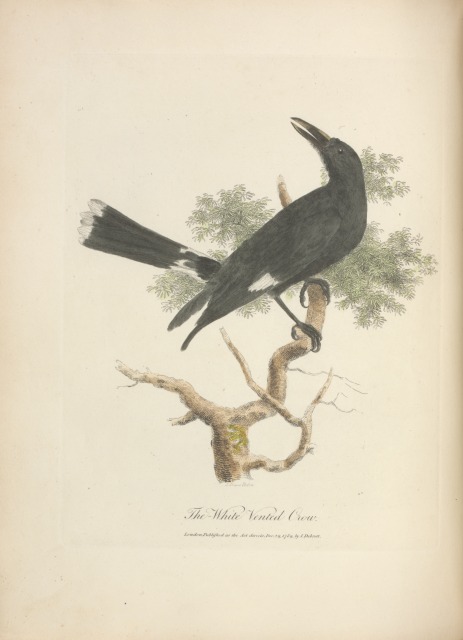
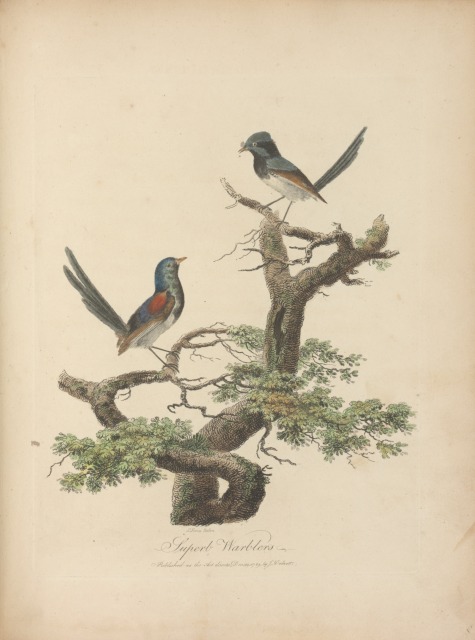
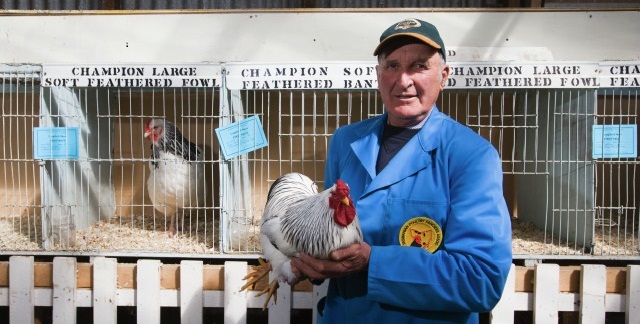
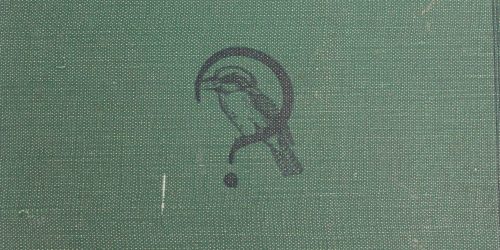
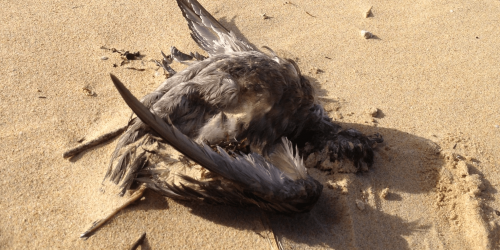
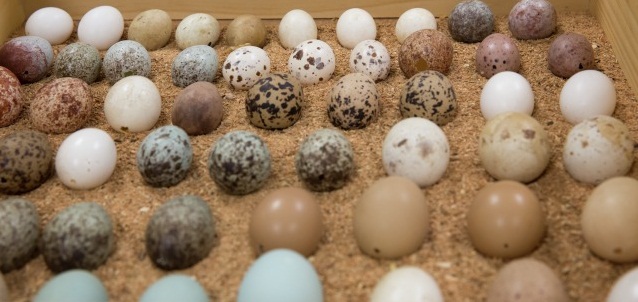
Is the crested goat-sucker a tawny frogmouth? The description fits – especially the bit about the wide beak – but the image makes the bird look a bit thinner than most of the frogmouths I’ve met. Maybe this one had been eating low-carb insects – or low-fat goat’s milk.